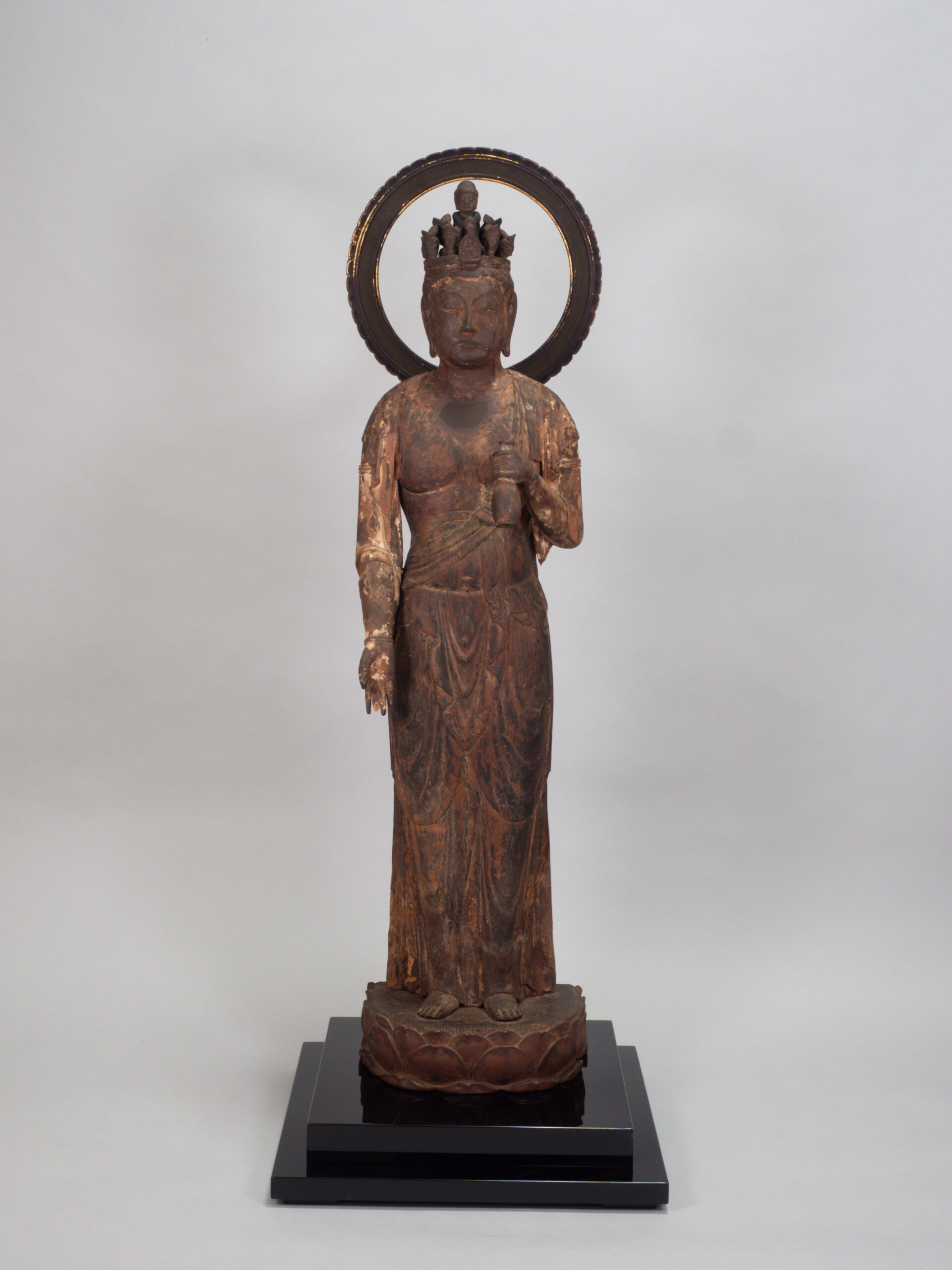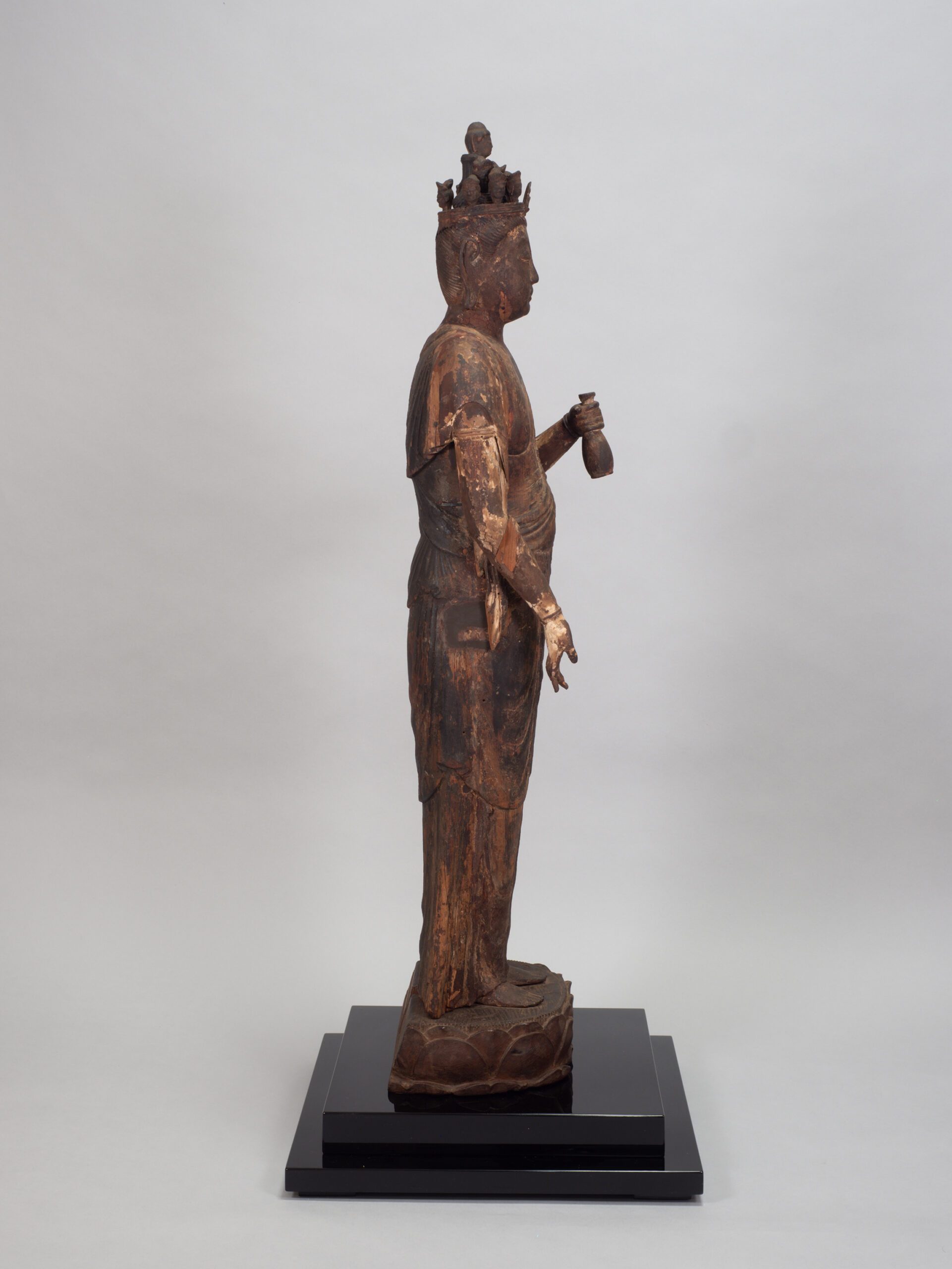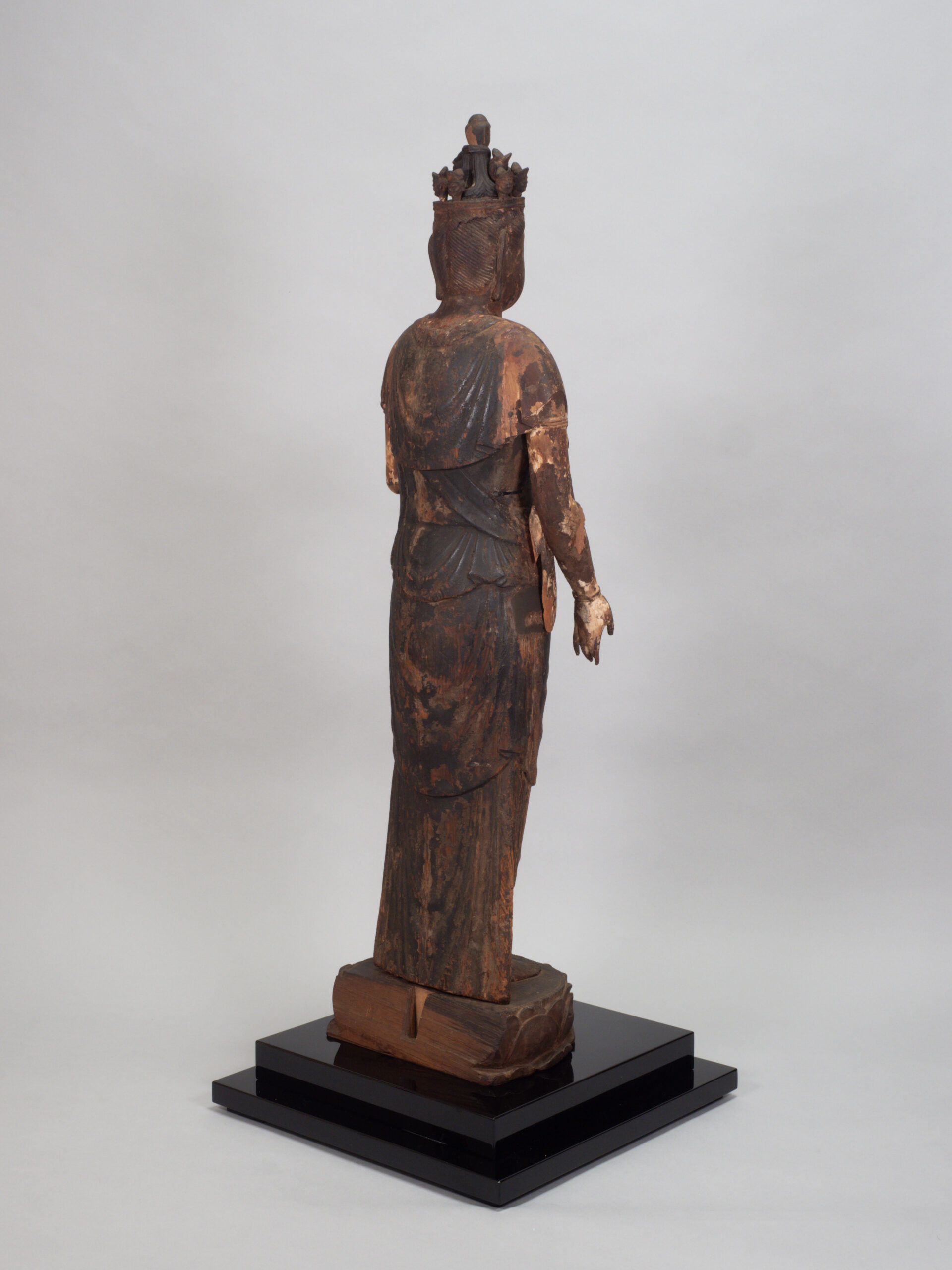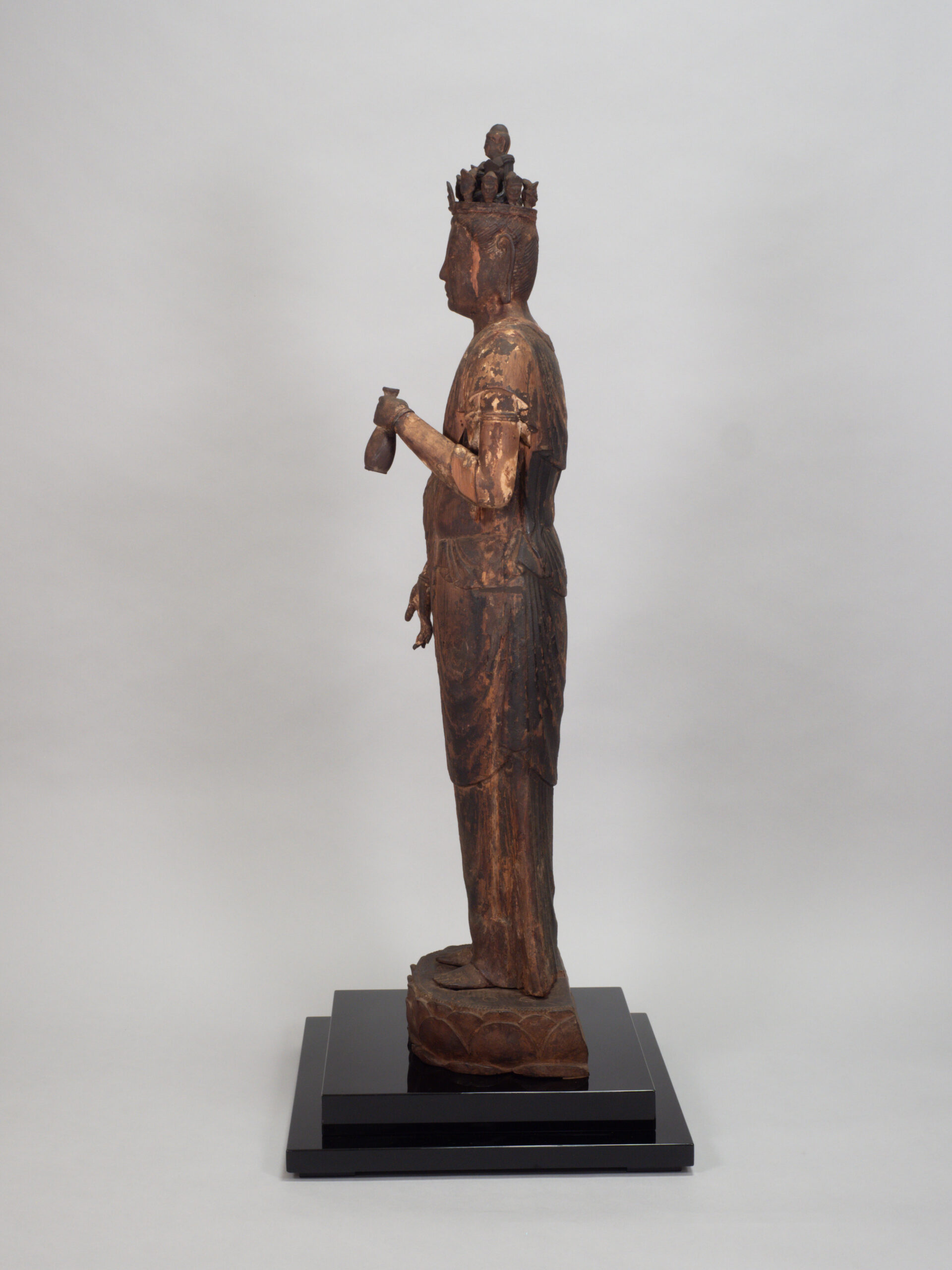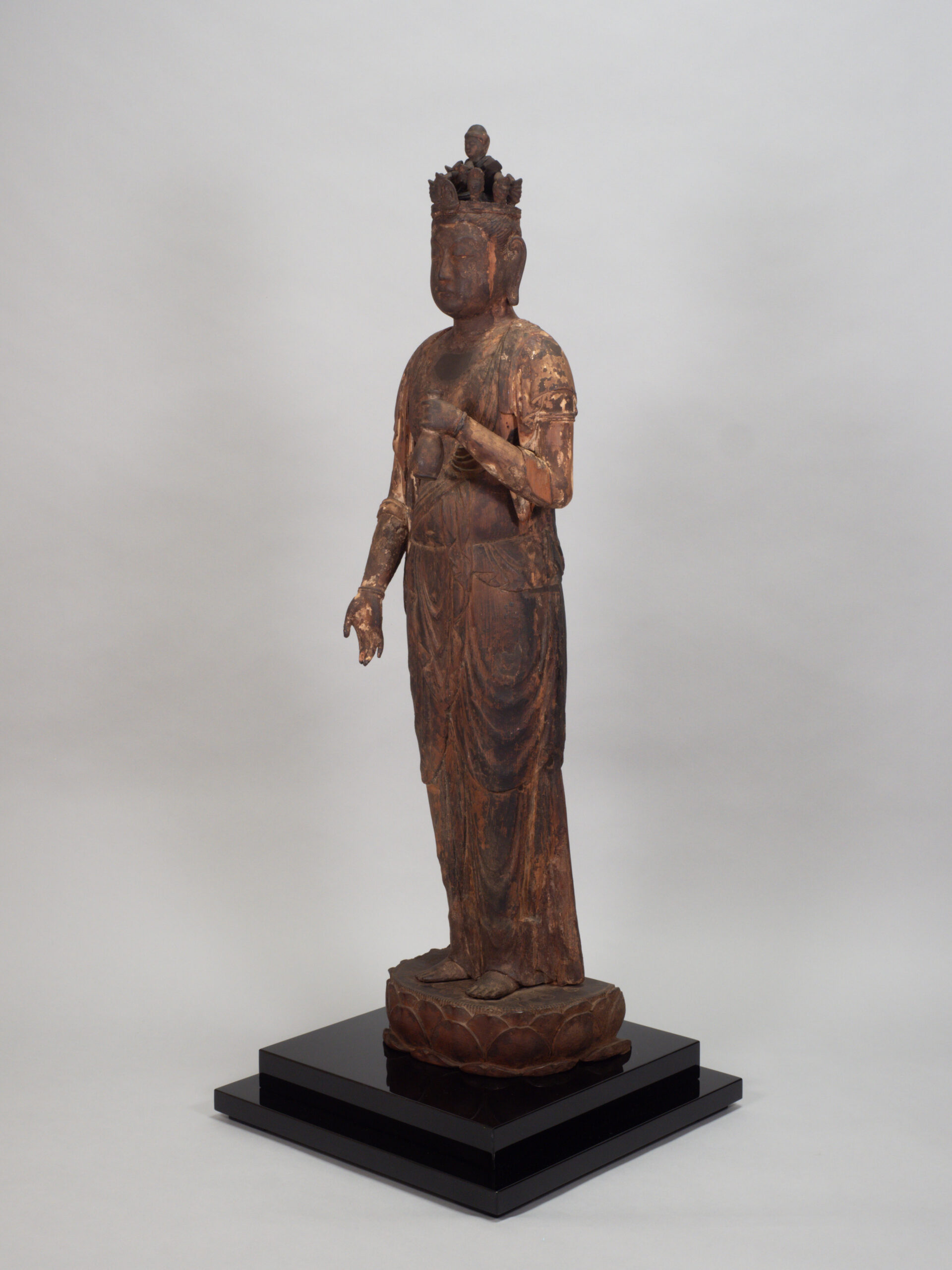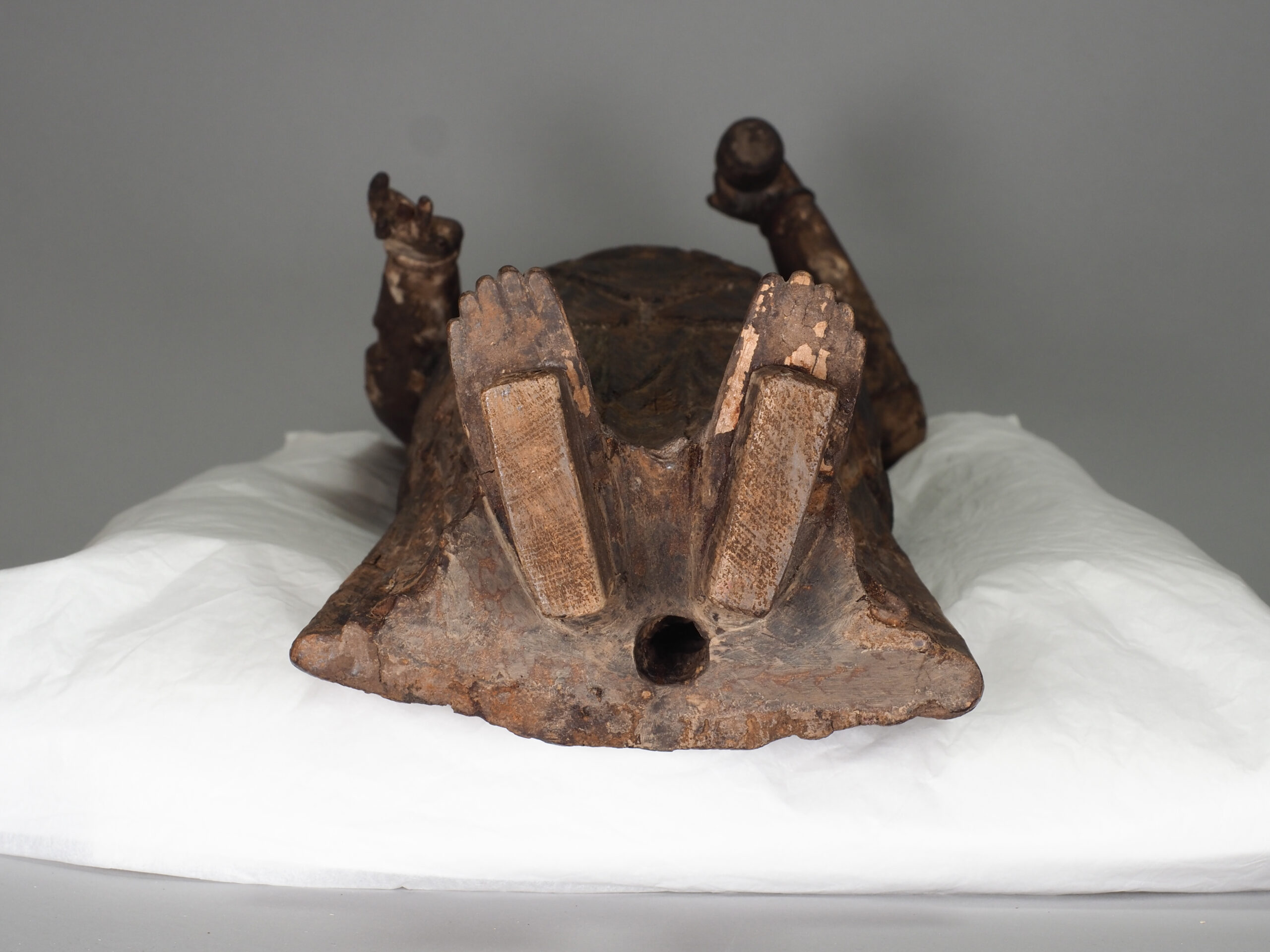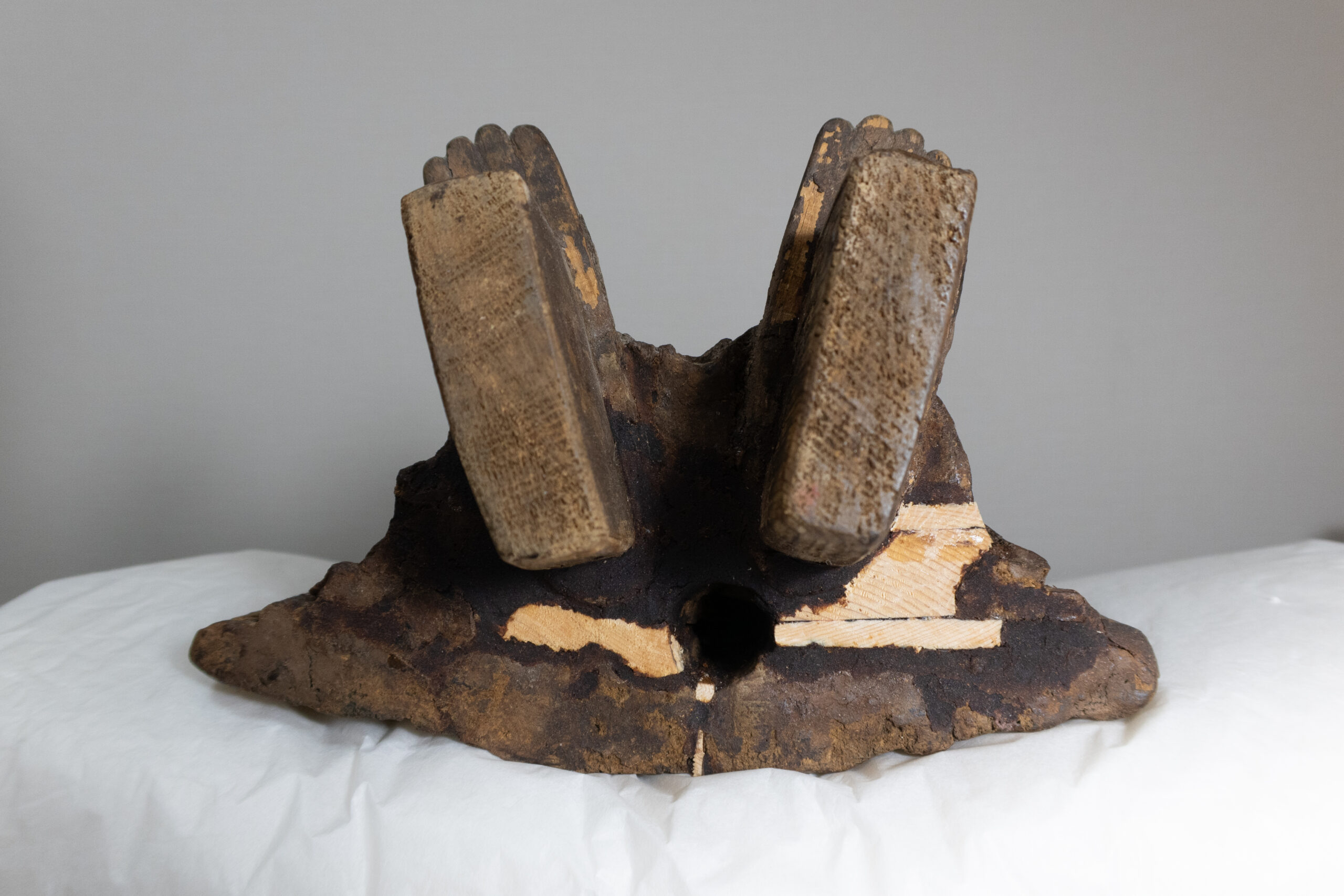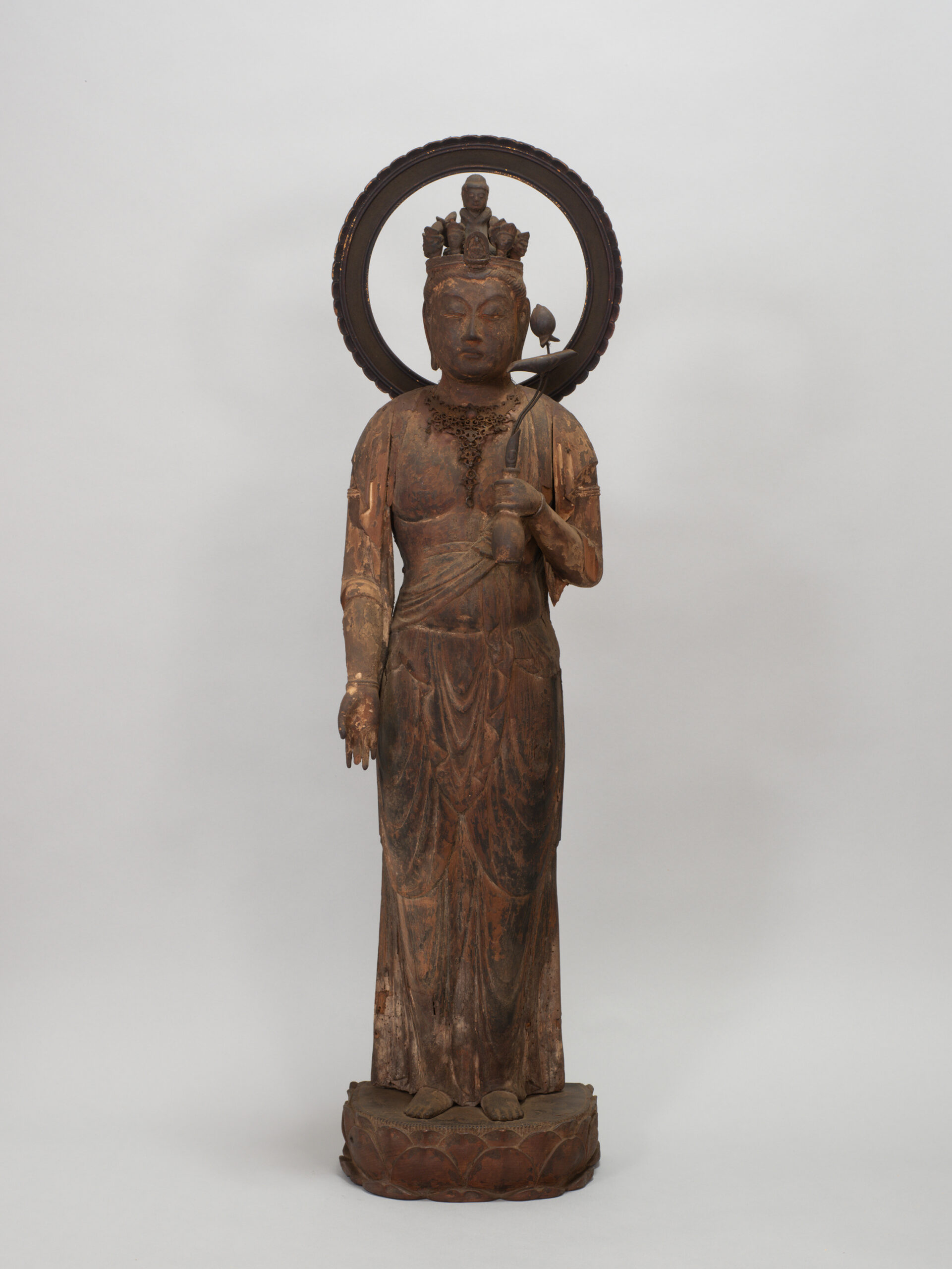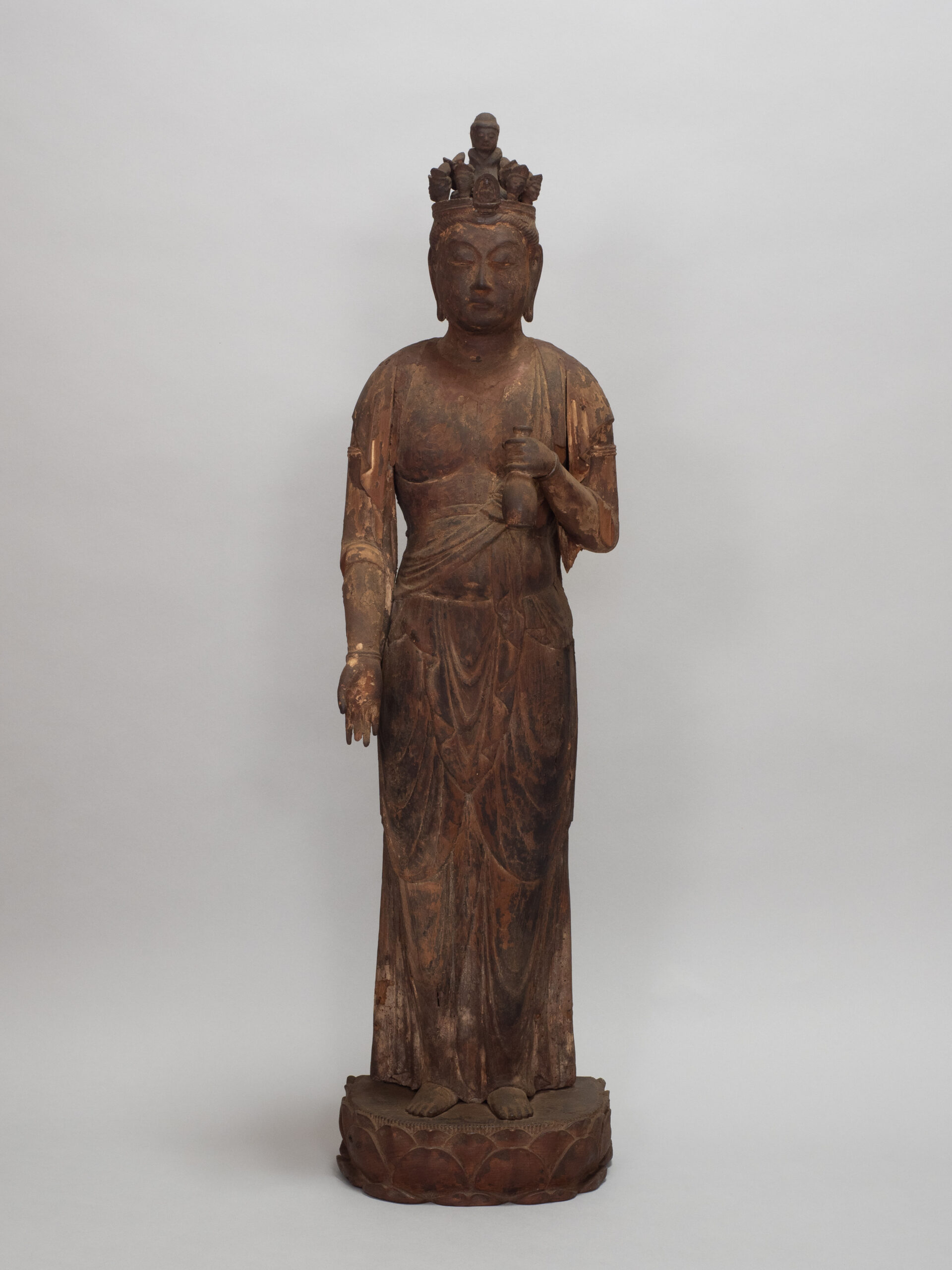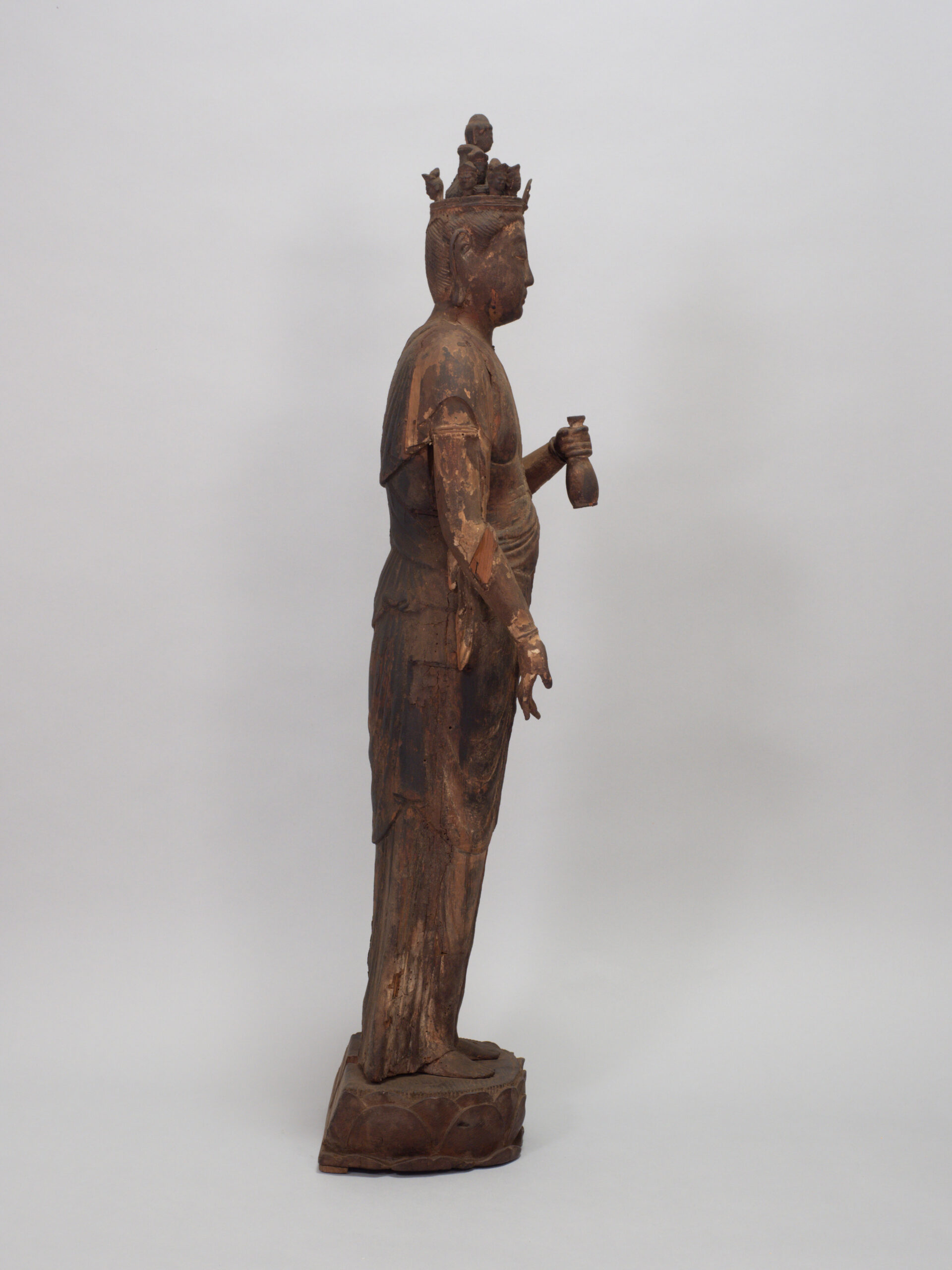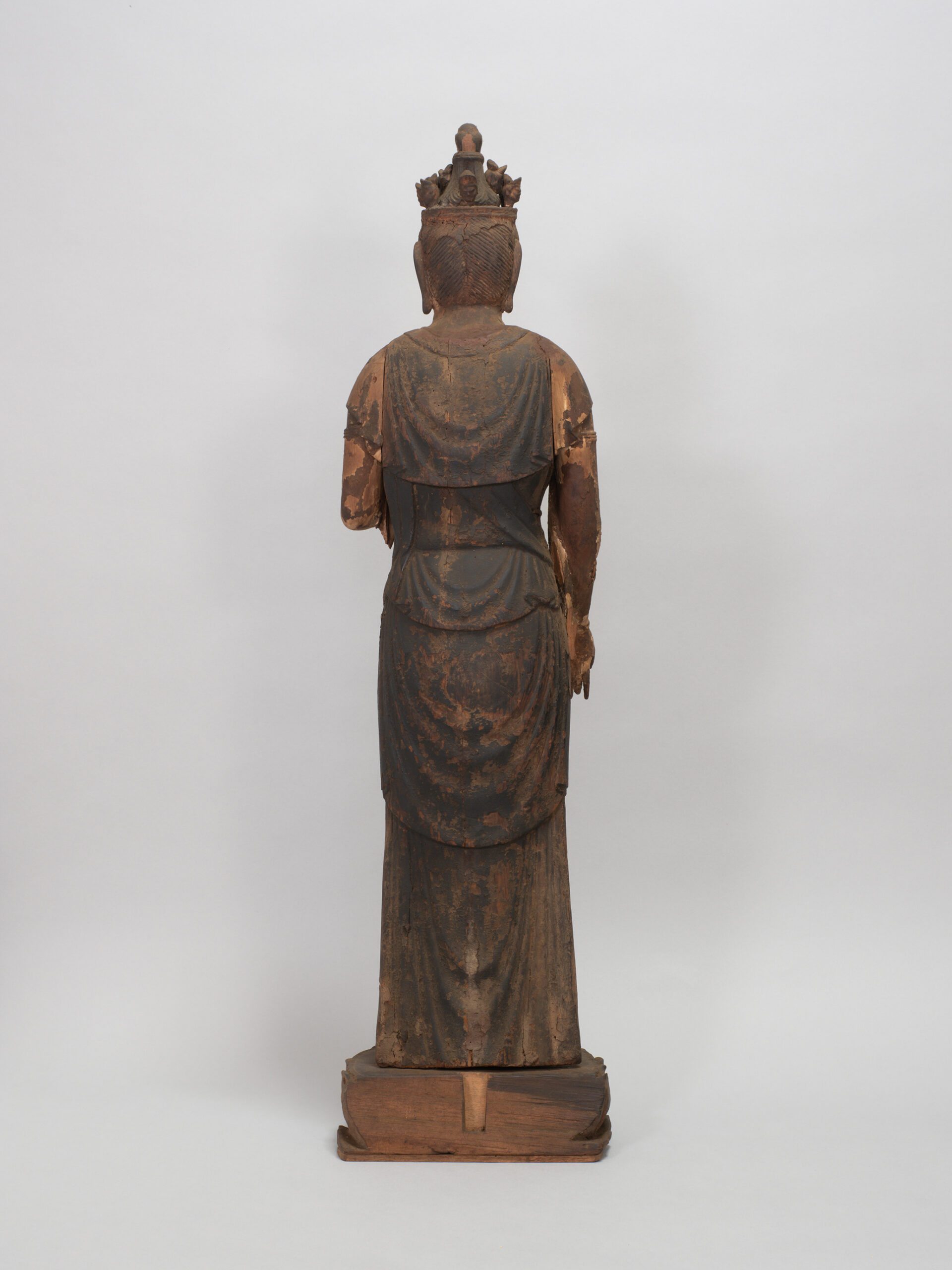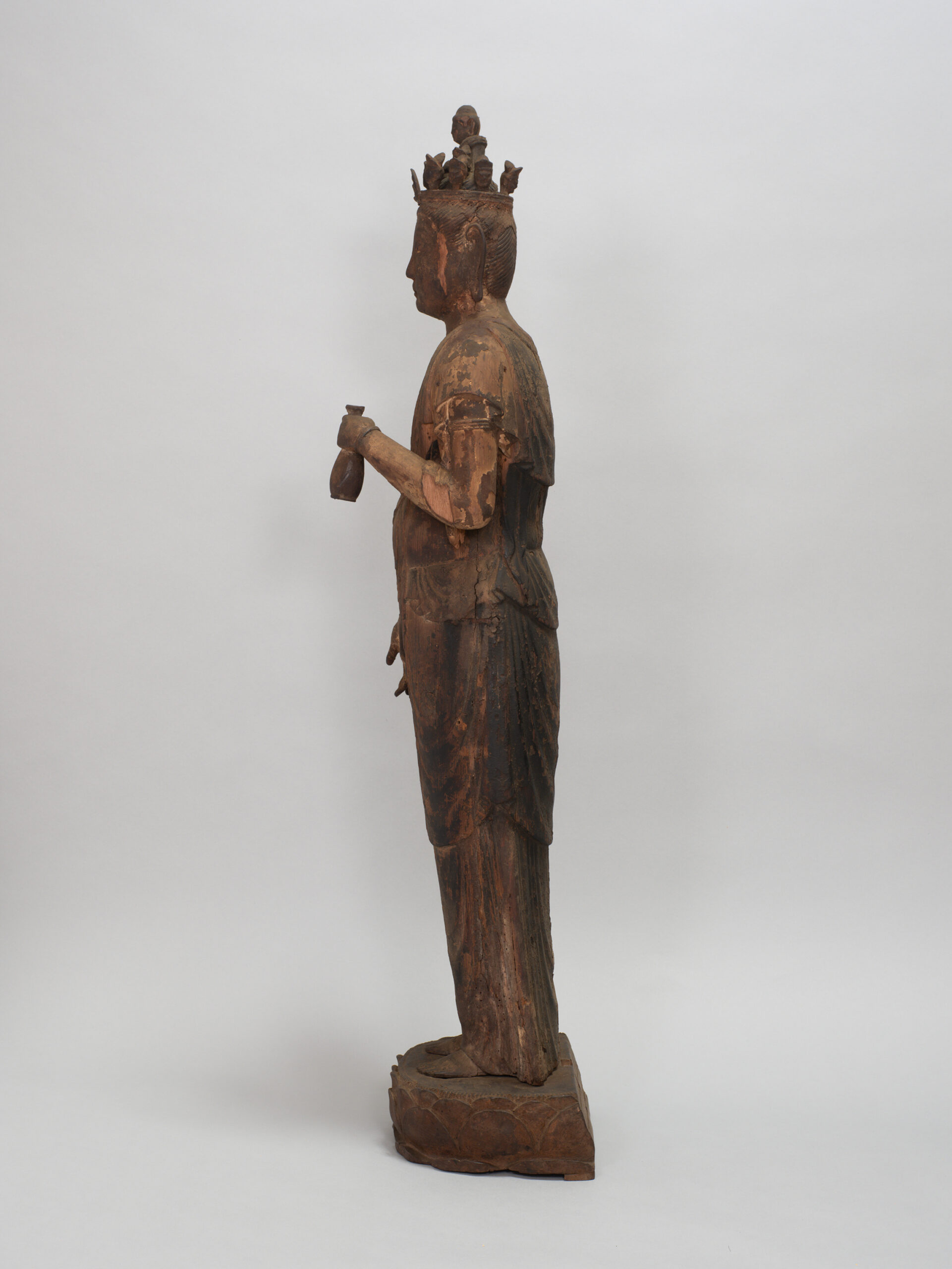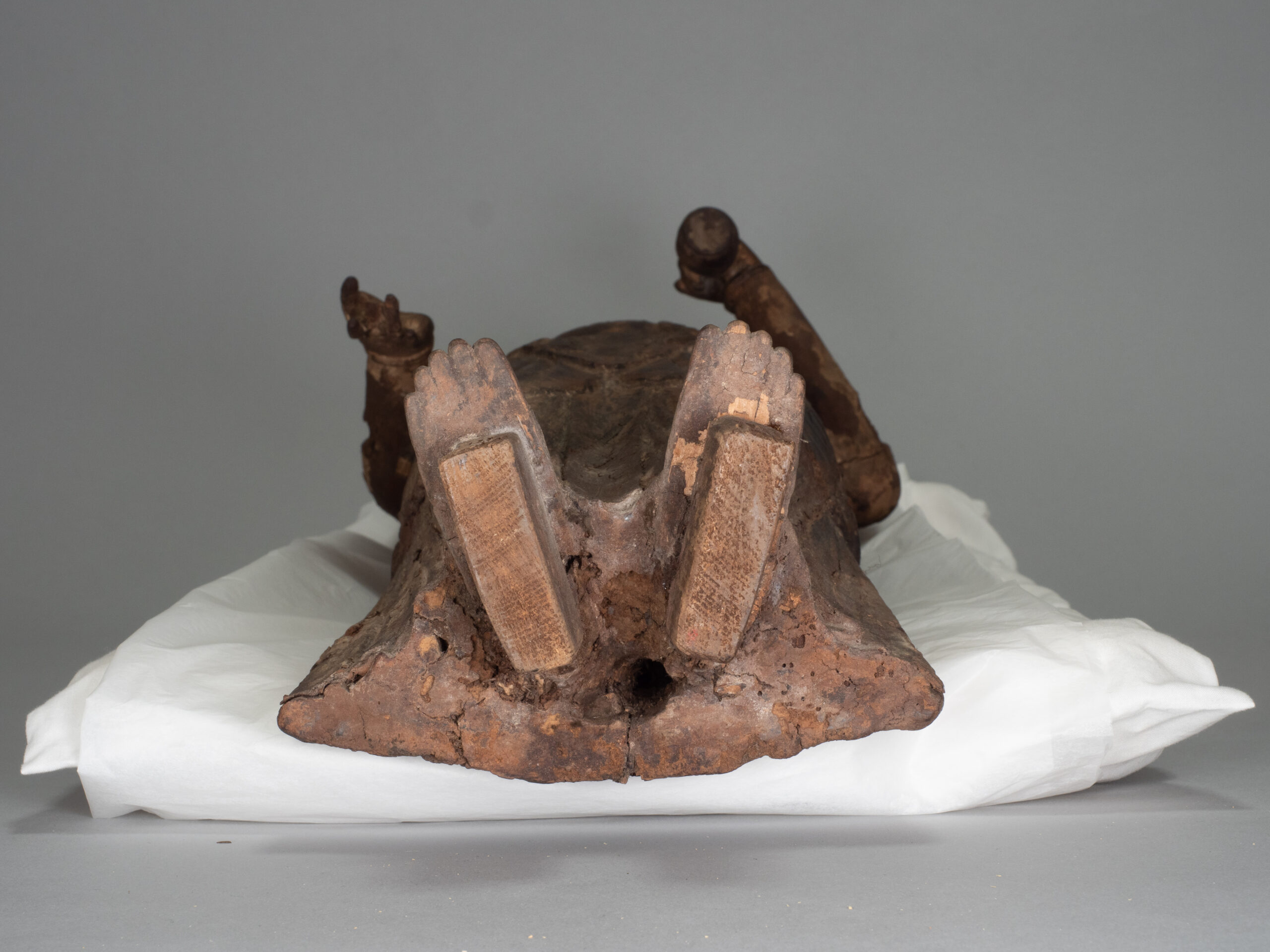The Wooden Standing Statue of the Eleven-faced Kannon Bodhisattva
Shinnyoen Shinchoji TempleThe Wooden Standing Statue of the Eleven-faced Kannon Bodhisattva
2023~2024
- Name
- The Wooden Standing Statue of the Eleven-faced Kannon Bodhisattva
- Repairment Year
- 2023~2024
- Owner / Location
- Hanzomon Museum [ website ]
- Materials
- Japanese cypress
- Size
- 79.8cm
The gently refined shaping of the body indicates that this statue originates from the late Heian period, around the 12th century. However, numerous signs suggest that it has undergone several restorations over the years. Due to the intricate combination of original and later-added materials, a CT scan was conducted at the Tokyo National Museum before any restoration work. The scan revealed that the head above the neck, both arms, and the legs were all replaced with pieces made in later periods.
A nameplate affixed to the back of the lotus pedestal indicates that the statue was appraised by the Buddhist sculptor, Bunya Tanaka in 1922 (Taisho 11). It is likely that the extensive restoration of the statue took place during this period.
Under the supervision of Dr. Tsutomu Yamamoto, the director of the Hanzomon Museum, we engaged in thorough consultations with the museum, the custodian of the statue. Our restoration strategy emphasizes the preservation of the original late Heian period aesthetics, while also retaining any later-added materials indicative of previous repairs. This methodology aims to uphold the statue’s current state without detracting from its significance as an object of reverence.
As we began the dismantling process, we discovered that a multitude of materials, varying in size, had been meticulously applied to match the sculptural form of the body, thus constituting the present Eleven-faced Kannon Bodhisattva statue. Additionally, a thick layer of lacquer had been used to envelop these shapes, bridging the gap between the later-added materials and the original form. Progressing with the restoration, we observed clear traces of past restorers’ efforts to painstakingly reconstruct damaged sections, striving to maintain the statue’s revered status. Each of these materials underwent restoration treatments akin to the original ones, bolstering their structural integrity for future preservation. Only the structurally vulnerable areas were supplemented with new parts, finished in a uniform color to distinguish them as modern additions.
I would be pleased if the appearance of the Eleven-faced Kannon Bodhisattva statue, which has been entrusted to and revived by various individuals and artisans throughout different periods, continues to be admired and enjoyed by many people in the future.


